 Originally published October 30, 1992, in Comics Buyer’s Guide #989
Originally published October 30, 1992, in Comics Buyer’s Guide #989
When you look back at 1992 and are asked what movie best epitomizes what the literature of heroic fiction in general and comic books in specific is supposedly about…
What are you going to reply? The chances are that most people would kind of shrug their shoulders and say, “Batman Returns.” I mean, what’s the alternative? Captain America, newly released on videotape.
Hardly.
The thing is: There is a movie currently out that is far better exploration of the nature of heroes, which is what most super-hero comics are supposed to be in the first place.
That film is the aptly titled Hero, currently on view at a theater near you. And I would be
inclined to say that Hero should be required viewing for all people currently participating in the super-hero genre of comic books. Because it’s a fabulous treatise on the nature of heroes and a reminder of just what the comics we’re producing should be about.
Dustin Hoffman is a down-and-out loser named Bernie Laplante. Facing a certain prison sentence, a frowning ex-wife, a sure-to-be disillusioned son, Bernie remains resolutely unlikable.
Many critics have compared Laplante to Hoffman’s Ratso Rizzo from Midnight Cowboy. That may be off base; if you’re looking for comparisons, you might choose Hoffman’s Raymond from Rain Man who, because of his mental condition, is incapable of learning and changing and growing.
Likewise, no matter how many people try to help him, Bernie continually watches out for himself above all others. He regrets his apparently inevitable prison term, but one senses that, given the exact same set of circumstances, he’d find himself right back in front of the same judge awaiting sentencing.
And then fate literally throws directly into Bernie’s path an opportunity to elevate himself–a crippled jumbo jet which, one night, incredibly (and in rather unlikely fashion) crash-lands on the road mere feet in front of Bernie’s car.
And Bernie saves the day.
He’s not happy about it. He crabs all the way. He drags passenger after passenger to safety, unable to ignore their pleas for help–including cutesy-named TV reporter Gail Gayley (Geena Davis)–and the entire time curses himself out for what he perceives to be his weakness of character.
He subsequently disappears into the night and ultimately is more than happy to distance himself from the entire incident.
When he makes half-hearted attempts to tell people who know him about his adventure, the notion that he would act heroically is dismissed out of hand. (“It’s against your father’s religion,” his son is informed by his ex-wife, played by Joan Cusack.) Bernie is more than happy to let it drop–until a reward of $1 million is offered to the unknown hero whom the media refers to as “The Angel of Flight 407.” But before he can claim it, someone beats him to it: A homeless man named John Bubber (Andy Garcia, resolutely bland in the role–oh, what Scott Bakula or William Hurt could have done with it), who was the only one that listened to Bernie’s tale, steps forward and takes credit.
Bernie rots in jail while Bubber becomes the toast of the town. And then things really get involved.
Hero gets tremendous mileage out of a simple premise that has been explored in such diverse vehicles as Mr. Smith Goes to Washington, Amazing Fantasy #15, “The City on the Edge of Forever,” and Quantum Leap. That notion is that one person can make a difference: that anyone, no matter how humble, has it within him/her to do great good, if presented with the right set of circumstances.
This was the sort of thing that Frank Capra, with such films as Mr. Smith and It’s A Wonderful Life (both starring quintessential Everyman Jimmy Stewart), excelled in. Stewart’s desperate filibuster in Mr. Smith remains one of the great movie moments, and the purest definition of the little guy rising to heroic status.
In Quantum Leap, time traveler Sam Beckett’s actions have far reaching consequences: Convince a teenager in the 1960s that life is worth living, and in the 1990s he makes the breakthrough that results in a cure for cancer.
“City on the Edge of Forever” explores the downside of that equation: Edith Keeler has qualities that make her special and important, but those very qualities are what doom her, because World War II was not the time to promote the notion of “peace is the way.”
And, of course, Amazing Fantasy #15, in which Peter Parker learns that not only can one person make a difference, but that people have an obligation to try to make that difference, if it’s at all within their power to do so.
The thing about Peter Parker is that there was so much about him not to like. Indeed, he’s the kind of kid that most other kids who were typical readers would have, under ordinary circumstances, distanced themselves from in school. Think about it: He wore glasses, neatly pressed pants and sweater vests.
He was a brain–the kind of guy who wrecked the grade curve.
His aunt babied him and he let her.
He whined constantly about all his problems.
He never, ever, wanted to go out and have a good time. Instead, he was studying constantly.
He wasn’t on any teams.
Let’s face it. Peter Parker was not the sort of guy who anyone would have been friends with in real life.
But Stan Lee and Steve Ditko created a hero whom, nevertheless, we rooted for. We liked him (no small feat) not in spite of his failings, but because of them. Because we were able to relate to his struggle against tremendous odds and, ultimately, we admired him for his resolute ability to pick himself up, no matter how many times he got knocked down, and keep coming back.
We were pulling for him.
We feel likewise about Bernie Laplante. Here’s a guy whom, quite simply, you should not trust. Someone who, in the midst of performing a heroic deed, stops to filch a woman’s purse. A criminal, a lousy husband, a crummy father teaching his son the worst possible lessons he could.
Yet we find ourselves attracted to, and amused by, the perversity of his nature. Deep within Bernie–so deep that it’s invisible to everyone he knows–is a streak of heroism. And we sense that he knows it, too, and is embarrassed by it.
It gives us a subtext (and the wonderful thing about subtexts is that they can be anything to anyone) in which all of Bernie’s griping is a cover for this truly admirable individual whom he has secreted away within him. Nobility is a drawback in his line of work (selling stolen goods), and so he does everything he can to bury it from all eyes, including his own.
But when the crunch comes, the hero within him blossoms forth. Unlike George Reeves’ transformations, in which he would leave all hints of the meek and mild Clark Kent behind in an alley, Bernie is incapable of checking his ignoble baggage and instead carries it on the plane with him, grousing through his bravery. It makes him all the more likeable and accessible for the viewer, because now we’re in on the “act.” He can complain all he wants, but we’re in on his deepest secret now.
And so we like him.
The stained hero, the hero who’s apparently unheroic in many ways, has been very much a part of the super-hero scene ever since the debut of Fantastic Four #1.
Before that, the civilian identities of the heroes were either ciphers, or had one attribute (Clark Kent was mild mannered, Bruce Wayne was a millionaire playboy). And the heroes were men (mostly) who used their powers for right because (in circular reasoning) they were heroes. And the villains used their powers for evil because they were villains. And the villains were as imperfect as the heroes were perfect.
But then in the early ’60s we got the Fantastic Four who fought all the time (as opposed to other teams where everyone got along famously) and then the prototypical reluctant hero, Spider-Man.
Now, though, we’re in the 1990s. Anti-heroes abound in comics. The problem is, a lot of creators have got the “anti” part right–but they’re totally missing the boat on the “hero” part.
It’s easy to create someone who’s unlikable. That’s a snap.
The much harder task is to create someone who’s unlikable that the audience then likes, not only in spite of the character, but in spite of themselves.
Stan Lee and Jack Kirby and Steve Ditko pioneered the comic book concept of the flawed hero. But now, like a Xerox copy of a Xerox copy, we’re losing sight of what made that hero work in the first place. Instead we’re developing a series of characters who have the flaws but none of the truly noble qualities that would make them admirable.
It could be argued that making protagonists imperfect makes them human. Granted. But what makes them protagonists is that they try to overcome those imperfections and rise to heroic heights. The reader identifies with, and admires, the striving.
But instead, in comics, we now have some characters who not only do not strive to overcome their flaws but instead, in fact, revel in them. Their morals are nonexistent, their actions repulsive.
What makes them heroes? Nothing readily apparent. Indeed, when young fans are asked what they like about these characters, they are unable to cite anything that relates even vaguely to simple humanity.
Instead, in many instances the only thing that counts is body counts. What makes a hero a hero is not something as apparently immaterial as bucking the odds, both physical and personal. Instead, the more popular a hero is is based on how willing he is to kill and just how many people he manages to off.
What a great message to send to readers. Instead of giving them characters that appeal to the best part of human nature, we give them characters that appeal to the worst.
And there’s no epiphany. No moment of heroic impulse.
Jefferson Smith, confronted by the political machine that is out to crush him, realizes that his responsibility is to the people who sent him to the Senate and knows that he must take action. The heroic impulse.
Peter Parker, confronted with the burglar who murdered his uncle, realizes that he can never stand by again. The heroic impulse.
And young Bruce Wayne–well, he’s grist for an entire column in and of himself. So we’ll leave him for another time.
And then there’s Bernie Laplante who is more concerned about his expensive shoes than about the lives of the passengers. But we know that, deep down, it’s just another excuse to avoid the heroic impulse that he reins in. And then that impulse can no longer be hidden, when a frantic boy pleads with Bernie to save the boy’s father, still trapped in the plane.
Bernie looks down at him, seeing something of his own son in the boy’s face, and finally gives in to the heroic impulse.
We applaud this moment. We applaud them. The all-too-fallible human, elevated to a moment during which he can accomplish great things. During which he can take actions that will serve the greater good.
Too many “heroes” of the comics are losing touch with that humanity. Their personal struggles seem capricious. And the villains they struggle against have motives so obscure, plans so oblique, that it’s hard to remember that humanity has anything at stake.
We’ve got to go back to giving readers characters with ties to humanity that the readers can relate to. Giving them stories that can make them feel good about themselves.
It would take effort. Effort of–dare we say it?–heroic proportions.
Ultimately, one hopes that it will be worth it.
(Peter David, writer of stuff, highly recommends Cerebus #162 to anyone who has ever had a bone to pick with Gary Groth. Dave Sim, in a three-page essay, neatly eviscerates Groth’s world better than I’ve ever seen it done, in response to a Groth editorial about Sim. Groth may want to return to attacking the deceased in the future–it’s so much safer.)
![Reblog this post [with Zemanta]](http://img.zemanta.com/reblog_e.png?x-id=48d111bc-ec70-4f2a-a50c-c7a98dc7fac5)
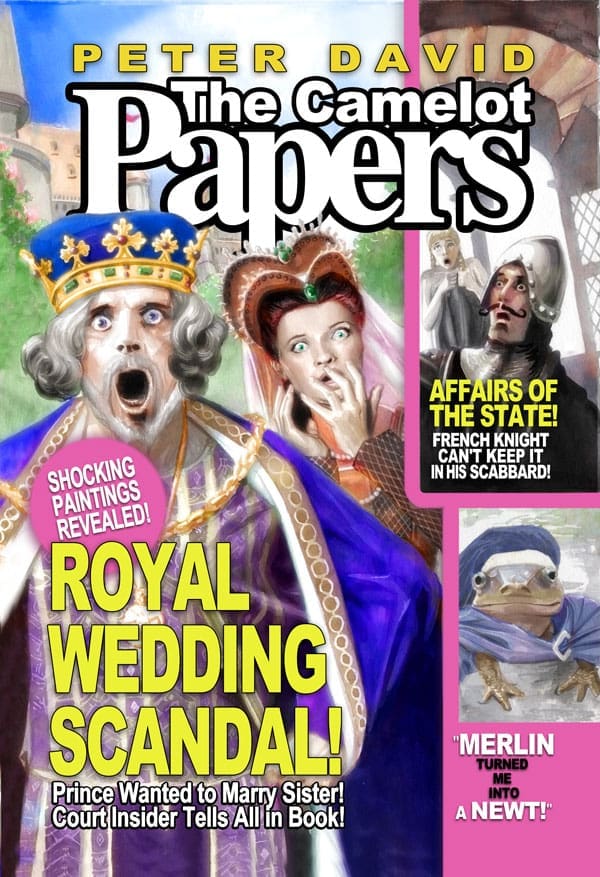
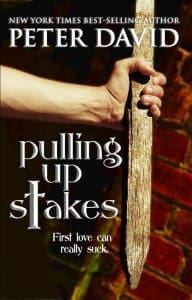
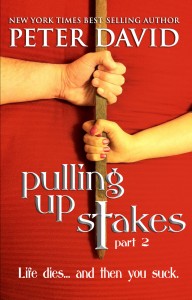
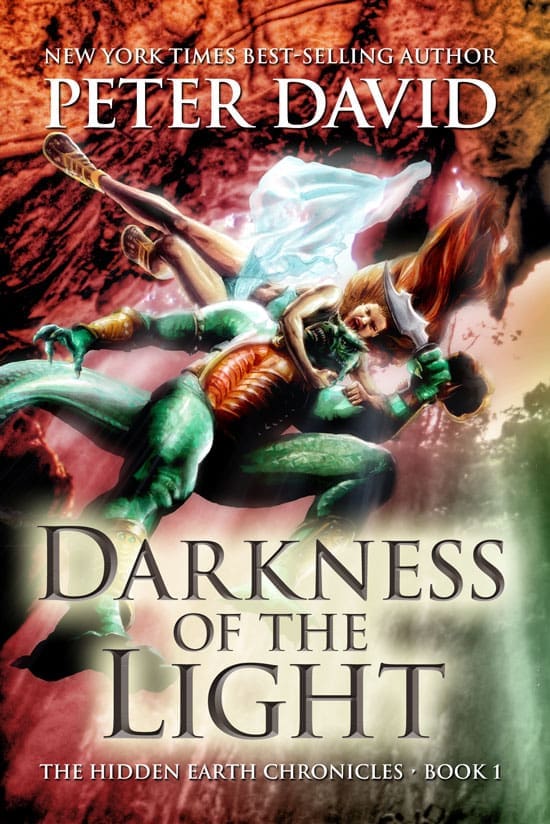
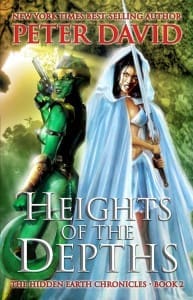
Good film. I’ve never met anyone else that watched it.
I did, and adore it.
One of Dustin Hoffman’s better roles along with Tootsie’s Michael Dorsey, a struggling actor, notorious womanizer and impatient non-compromiser who became a better man by impersonating a woman. I would ask Peter if Bernie LaPlante was the inspiration for an unlikely hero that HE created: Sir Apropos of Nothing?
That really is an underrated little movie. I have no idea why the critics panned it, when it’s easily the most entertaining movie Stephen Frears has ever made (most of his movies bore me).
Not knowing when the relevant movies came out, I was confused by the start of this article. Hero (Jet Li) was what I thought it was about at first, because “Hero” was known as “Accidental Hero” over here. And I kinda think that that title works better.
.
Wish I could remember how it ended.
Boy, that one slipped right by me back then.
.
It goes on the Netflix queue for when we can afford to start it back up.
I remember thinking, when I saw the movie, that it was at least a half hour too long and could have been an entertaining movie with a much better editor.
Never saw this – and I love Hoffman. So I need to search for it now. And the bit about the dominance of anti-heroes was right on the mark.
I tried watching Hero on TV once, but I missed the beginning (including the crash and rescue), and I had a lot of other distractions, so I didn’t even stick with it until the end. But what I saw did have its good points. I know I really should try to see it properly sometime.
And I too agree with everything you said about ’90s anti-heroes, much of which is still true of comics today.
Interestingly enough Laura Ziskin and Alvin Sargent, credited for the story of Hero, produced and wrote Spider-Man 2. A movie widely considered to be the best pure comic movie of all time.
It was actually a pretty weak film. I find it similar to a lot of films in that it has a really great concept, but gets the watered down Hollywood execution, like John Q. Quick Change, etc, etc.
On this topic of the heroic impulse”
In the past 10 days or so, I’ve had the fortune of watching “Gran Torino” and all 8 “Nightmare On Elm Street” films.
In “Gran Torino”, a crusty, rough, old Korean War vet who doesn’t seem to like anyone – even his family – displays the “heroic impulse” numerous times despute being a obvious bigot and admittedly poor father. It is capped by a “heroic impulse” that I don’t think anyone will see coming.
.
The “Nightmare” films, however, were obviously very successful or there wouldn’t be eight of them. But if I remember correctly, numbers 5 and 6 – definitely 6 – did abysmal box-office compared to the others (7 was a unique, ambitious idea by Craven and 8 was basically a monster movie where the clash between the two big killers was the focus and not the rest of it).
The reason 5 and definitely 6 started to erode the popularity of the franchise, I think, was because the movies were no longer about cheering Heather Langenkamp or Johny Depp on and hoping they survived. Instead, FREDDY became the character people cheered for. They actually were cheering when he succeeded i offing another nameless, selfish teen. The movies started to encourage you to root for the villain and wait for his one-liners and increasingly-ridiculous special effects and ways to attack. No one was rooting for a hero near the end because that’s not what the last couple films – especially the last one – seemed to want you to do. And that’s why I think the franchise ended with a thud!
.
I started getting that vibe with #4. Maybe even #3 since many of the kids were such brats.
It’s the single biggest flaw in modern horror movies. It’s also one reason why pro wrestling is struggling compared to its glory days. It is very very easy to make a good villain. the challenge is always the hero.
.
Make the hero too strong compared to the villain and we don’t get much satisfaction in their victory (making Doctor Doom into little more than an armored bad guy from a CSI episode really hurt he fantastic 4 movies). make the villain too interesting compared to the hero and it becomes all about him (imagine Hannibal without Hannibal).
.
It’s a sad sign of these envious times that there are people who resent those who are, frankly, just better people than they are. Instead of being inspirational figures, heroes are just reminders of how poorly they measure up to that standard.
.
Or it could just be that the kill scenes are the only parts of the movie that show any imagination and creativity, even if it is only on the part of the makeup artist.
.
My pick for best genre movie of the last 10 years–Kinji Fûkášákû’s BATTLE ROYALE. 40 or so characters killed. Some get all of a minute of time and in that minute we are given more reason to care about what happens to them than many American horror movies can manage in their entire running time.
Yeah, the first Nightmare movie is the only one that’s really a horror movie (well, and New Nightmare). The rest are comedies centered around a homicidal comedian. Which isn’t a bad thing, per se (I actually like all of the movies except the second one, which was just awful, and Freddy vs. Jason, which I haven’t seen).
.
Although if I remember correctly, 5 (that was the Dream Child, right?) made somewhat of an effort to restore the horror nature and make us root for the girl instead of Freddy. She does win in the end, after all (as do the characters in 6). In any case, I don’t think that was the reason their popularity began to wane. If anything, it’s what made the series so popular in the first place. Freddy is funny. Kids dig that. And I actually think 3 and 4 exemplify what you’re talking about more than 5 and 6.
I disagree with Bill, in that I don’t think we live in particularly envious times. Dude, I remember the 1990s, and THOSE were envious times. We’ll always have people rooting for charismatic villains, but the 1990s seemed to have a buttload of them, with Freddy and Hannibal created in the 1980s, but their “cool bad-boyness” reaching their utmost in the 1990s. Also Venon, Carnage, Lobo, the Joker, and lots of lots of others.
The 2000s, by comparision, are positively inspiring, pop culturally speaking.
While we’re on the subject of horror…Dynamite just announced they’ve acquired Vampirella – and while many are dismissive toward the character Jeph Loeb, Alan Moore, Grant Morrison and Warren Ellis are among those who have written her adventures and a slew of superstar artists have drawn her, so there must be something all these people find attractive about the character. Hëll, I think it would be hard to find another character that quartet I just mentioned has worked on!
I grew up on the Warren books. Vampirella never quite worked as a series, though I was delighted when Peter Cushing was slated to play Pendragon in the aborted Hammer movie adaptation.
.
Frankly, I’d much rather see a tales from the Crypt type series using the best of the Warren stories. I understand that one such movie was planned and then negotiation fell apart and they had to write new stories for it–the result was the execrable DR TERRORS GALLERY OF HORRORS.
Honestly, out of those two Jimmy Stewart films (and I’m a fan), I always pegged “It’s a Wonderful Life” as showing more of my ideal for heroism. Here is a man, George Bailey, who, despite every instinct and intention to leave Bedford Falls to pursue his own dreams, stays to instead preserve the town. And although he’s constantly punished for this action, he endures.
.
He saves his brother from drowning? Looses hearing in one ear. He’s about to leave to attend college? Is harassed into assuming control of the Building and Loan, only so the evil Potter can’t. Although he does get some rewards (his wife and family), his potential and dreams are at large, wasted at his feet. But through all this, and even when you can see the pain it gives him, he endures and does the right thing. That’s a hero. A hero is not someone who does the right thing because it’s the right thing, a hero is someone who continues to do the right thing even if it tears him apart.
.
I haven’t seen “Hero,” but the premise intrigues me. I’ll have to see if the rental place I work at has a copy for me to spirit home.